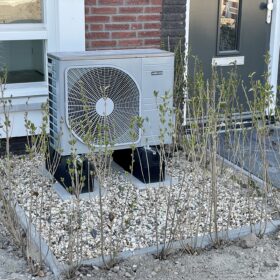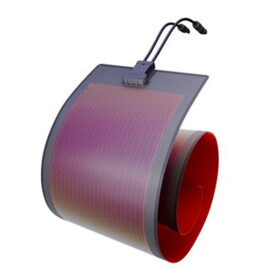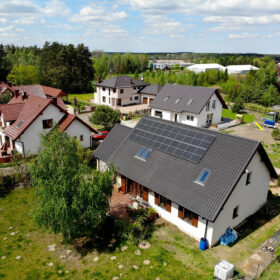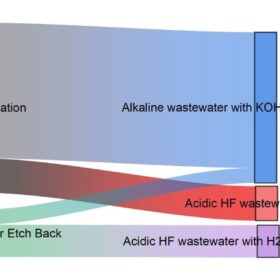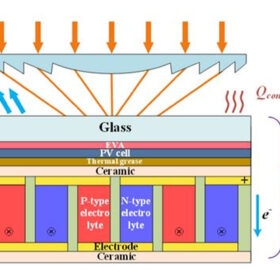Algorithms to detect underperforming rooftop PV panels
Australian researchers have developed multi-stage algorithms to remotely detect and accurately diagnose underperforming solar panels in residential and commercial PV systems.
Online tool shows CO2 savings for UK homeowners with heat pumps
British Gas has developed the Carbon Cruncher tool for the UK market. It contextualizes emissions by comparing them to other emitters.
PV-driven hybrid hydrogen fuel cell system for building applications
Scientist in Canada have proposed to combine rooftop PV power generation with an alkaline electrolyzer and a fuel cell to generate hydrogen in buildings. The new system is intended at enabling seasonal energy storage and reduce a home’s levelized cost of energy.
Voltaic Systems unveils battery monitoring system for offgrid PV applications
The U.S.-based PV system provider for infrastructure and industrial equipment without grid access has launched a battery health monitoring software module for its flagship Core Solar Power Systems product line.
TÜV Rheinland certifies organic PV product based on IEC 61215 standard
German certification body TÜV Rheinland has announced the certification of the first organic photovoltaic (OPV) product – an organic PV foil from Germany’s Heliatek – based on the IEC 61215 standard.
Swedish researchers propose tailored PV incentives
Researchers in Sweden have investigated incentive programs for rooftop PV and proposed the adaptation of future schemes to different investor profiles.
New water circulation tech promises lower PERC solar cell manufacturing costs
A German team developed models to illustrate water-saving potential in PERC silicon solar cell manufacturing based on a circular approach and commercially available technology. In the case of a 5 GW fab, water savings of up to 79% and wastewater discharge reductions up to 84% could be achieved, a “significant” improvement compared to a reference scenario.
New metallization tech for HJT solar cells minimizes silver use, increases efficiency
German research institute Fraunhofer ISE has unveiled a new metallization process for heterojunction solar cells that reportedly increases power conversion efficiencies by over 0.1% while reducing silver consumption. A device built with the new technique achieved an efficiency of 23.2%.
Hybrid system combining CPV, ionic thermocells achieves 49.63% energy efficiency
Conceived by scientists in China, the device consists of a Fresnel lens, a PV cell, and liquid ionic thermocells (iTECs) with electrolyte flow. In can reportedly outperform CPV systems built with thermoelectric generators, both in terms of costs and efficiency.
Australian lithium-sulfur battery player claims to have nailed safety standards
Australian battery company Li-S Energy claims to have taken a significant step toward proving the safety of its semi-solid-state lithium-sulfur batteries, with the third-generation technology successfully passing a series of nail penetration tests.

